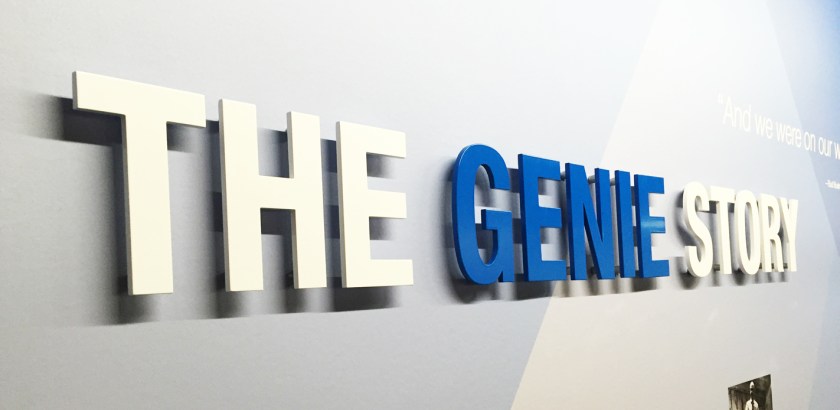Meeting a Legend: An Interview with Bud Bushnell, Founder of Genie Industries
by Chad Hislop - Sr. Director of Product Management On Mar 24, 2016, 03:00 AM
Subscribe To Aerial Pros
Filter by tags
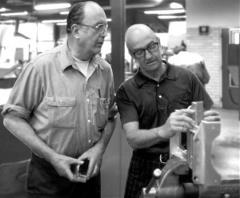 Webster’s dictionary defines legend as “An unverified popular story handed down from earlier times.” Bud Bushnell, founder of Genie, fits that definition for most of us, and it was with great pleasure that I had the opportunity to interview Bud about how he started Genie and his leadership in the first 10 years of our company. What I heard was a story beyond what I had anticipated — about a principled man who took a risk and started a team that has become greater than he ever imagined possible.
Webster’s dictionary defines legend as “An unverified popular story handed down from earlier times.” Bud Bushnell, founder of Genie, fits that definition for most of us, and it was with great pleasure that I had the opportunity to interview Bud about how he started Genie and his leadership in the first 10 years of our company. What I heard was a story beyond what I had anticipated — about a principled man who took a risk and started a team that has become greater than he ever imagined possible.
Although Genie Industries officially started in September of 1966, the stories both of Genie and Bud started much earlier. Bud is a World War II veteran, having served in the Pacific on the aircraft carrier Siboney as a radar electronics technician. After the war, he joined his father’s refrigeration business. Fifteen years in that business lead him to an opportunity to form a new business that built and sold an innovative sliding door, most commonly used at the entrance to supermarkets. Bud’s marketing and sales program brought great success to this business, resulting in a profitable sale of it in 1964.
Meanwhile, in 1960, an electrician in Seattle was challenged with how to lift and install fluorescent lights. He developed a crude and unreliable product that used compressed gas to lift the fixtures. Bottled carbon dioxide was the source of power. He gave it the name “Genie.” Genie Manufacturing built about 200 hoists in the next four years until sudden tragedy left the business in ruin with the inventory in receivership. It was bought by Seattle Bronze, whose owner, Dale Fox, asked Bud Bushnell to consider applying his business skill to this innovative, but not ready to sell, product.
Bud took on the challenge of the hoist in June of 1966 as an employee of Seattle Bronze. Since the product was not ready for market, Bud had to devote the next few months to working out the problems and developing a plan to find customers. Economic times were not good for Seattle Bronze, and it was forced to let Bud go as part of its own bankruptcy just three months later. In the first of several key events in the company’s history, he was offered the opportunity to take the Genie inventory and business with him.
Bud didn’t say if he jumped at the opportunity or took some time to think it over, but in September, 1966, he formed Genie Industries and quickly hired his first team member. Arnold Paulson initially worked only part time, but by the end of 1966 he was a full-time member of the Genie team. Arnold pushed Bud to “keep it simple” and make sure “you can build it at a low cost.” These are familiar words today and represent the start of a Genie manufacturing tradition.
The next few years were characterized by hard work, steady but low volume, manufacturing space rented at the Seattle Bronze factory, and perseverance by Bud selling hoists into the industry. Stories abound at Genie about how Bud would travel around with a Genie Hoist in the trunk of his car, visiting potential customers, demonstrating the unit, and earning the sale one hard step at a time.
The year 1968 brought Genie’s first big business break. Dick Kirk, of the Washington State Department of Economic Development, asked to bring a visiting contingent of business people from Japan to see Genie and the Hoist. Like customers before, these men were quickly “infatuated with the Genie Hoist.” The difference between them and the countless customers Bud had visited in the past was the Japanese business men gave Genie a contract for 1,500 units. Suddenly, Bud had to ramp up production. They built and shipped 30-50 units per month. He hired two additional team members, plus a person to run the office. Bud commented, “If there was ever a major thing that affected Genie, that (contract) was it.”
Guaranteed business gave Bud the opportunity to do some brainstorming and new product development. In 1970, he got the idea that would “keep the company alive,” even though it was only briefly branded as a Genie product. By combining three hoist mechanisms with a platform, Bud and Arnold produced a convenient and portable device to lift people. Unlike the time-consuming scaffolding or clumsy scissor lifts of the time, this lift could fit into the back of a truck and be set up quickly by a single person. Bud could carry this lift in the back of his El Camino, set it up himself, roll it onto a jobsite, elevate it to its full 42-ft height, and impress everyone around.
Bud called the new lift the “Teletower,” which was soon noticed by the Vice President of Sales of Upright Scaffolds. A meeting followed with Upright Scaffolds, and suddenly Bud was faced with a dilemma. Upright wanted to buy the rights to the Teletower. Bud knew he had a great product, but he also knew that Genie had neither the manufacturing capacity nor the distribution system to exploit it. Bud made the hard choice and sold the rights. This transforming event provided the money to build Genie Industries.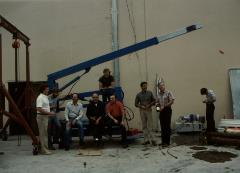
Although Bud continued at Genie until 1980, he had already found new leadership for his company. Ownership transferred to his son-in-law Bob Wilkerson, his son Ward Bushnell and Roger Brown, while Bud eased himself into a supporting role. He went on to find property for a new Genie facility in Kirkland and managed its construction. Then, he spent several years researching and developing new products. He told the story of how he came up with the idea for the Superlift mast while sitting outside the Amphitheatre in Sydney, Australia, at a trade show. He sketched it up and couldn’t wait to get back to the States where he got Alcoa working on the aluminum extrusions for Genie’s best-selling product of all time.
There are so many stories about Bud Bushnell, and only a few are related here. He is overtly proud of what he built and what Genie has become. He emphasizes his philosophy that you work hard, start a business, hire good people, and let them make their own future by running the business. Genie is a legacy built on Bud’s legacy and legend.
Related Posts
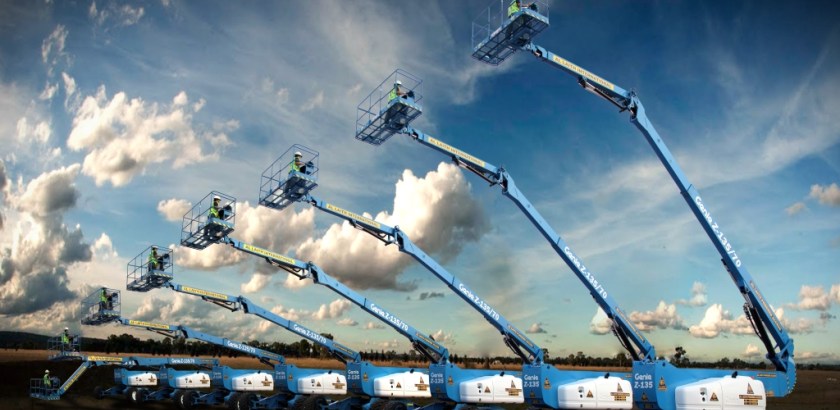
From Distributor to Rental, How Genie Embraced the Change in Aerial Equipment Distribution
I was asked awhile back about how I think Genie shaped the industry in the last 50 years.
Continue Reading
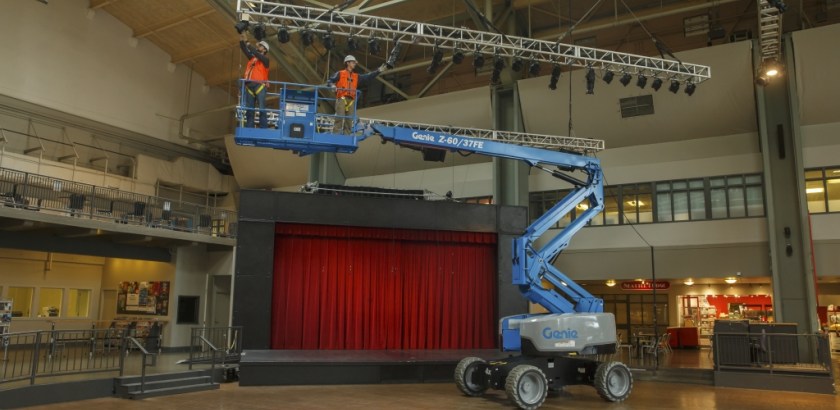
“Building the Future” – Genie Pioneers 50 Years of Innovations
Marking half a century of serving aerial markets around the world, Genie is celebrating our five-decade legacy of “Building the Future” through industry leadership and innovation this year.
Continue Reading
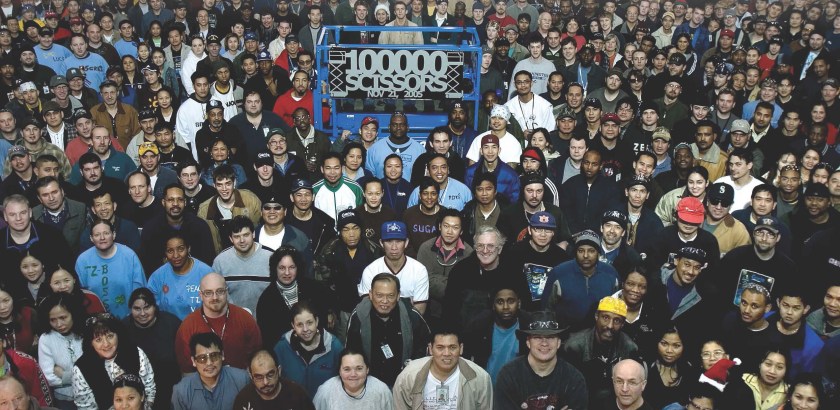
Lessons Learned in 50 Years
One of the best parts of getting ready to celebrate the company’s 50th anniversary is reflecting about what Genie has achieved in the last 50 years — how we’ve helped shape the industry, and how it shaped us.
Continue Reading


